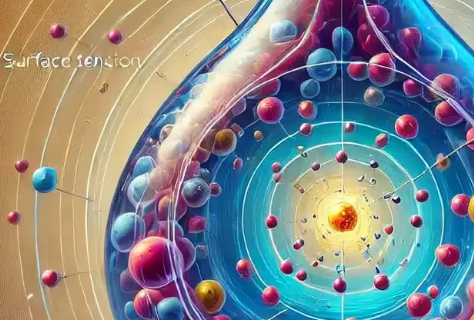Breaking Boundaries: Quantum X-ray Imaging in Medical Diagnostics
Introduction: The Intersection of Quantum Science and Medical Imaging
X-ray imaging has been a cornerstone of medical diagnostics for over a century, enabling healthcare professionals to detect fractures, tumors, and other internal abnormalities. However, traditional X-ray technology has limitations, such as radiation exposure risks and image resolution constraints. The advent of quantum technology is transforming this field, paving the way for higher precision, lower radiation doses, and enhanced imaging techniques. This article explores how quantum mechanics is revolutionizing X-ray imaging and what this means for the future of medical diagnostics.
Understanding the Basics of Quantum Technology
Quantum technology leverages the principles of quantum mechanics, including superposition, entanglement, and quantum tunneling, to process and transmit information in novel ways. Unlike classical physics, quantum mechanics allows particles to exist in multiple states simultaneously, enabling unprecedented computational power and sensing capabilities.
In the realm of X-ray imaging, quantum technology introduces quantum-enhanced sensors, quantum computing applications, and quantum imaging techniques that significantly improve accuracy and efficiency.
The Role of Quantum Technology in X-ray Imaging
1. Quantum-Enhanced X-ray Detection
Traditional X-ray detectors rely on conventional materials to capture X-ray photons, which can result in noise interference and reduced image clarity. Quantum-enhanced detectors use materials like quantum dots and superconducting sensors that provide superior sensitivity and higher resolution imaging.
-
Quantum Dots: These nanocrystals absorb and emit X-ray photons with high precision, leading to clearer medical images with lower doses of radiation.
-
Superconducting Detectors: Operating at extremely low temperatures, these detectors can identify individual X-ray photons, reducing noise and improving image contrast.
2. Quantum Entanglement for Improved Image Resolution
Quantum entanglement, a phenomenon where two particles become interconnected regardless of distance, is being harnessed to improve X-ray imaging techniques. Quantum-entangled X-rays can provide:
-
Higher-resolution images with less radiation exposure
-
Enhanced contrast in soft tissues, making it easier to diagnose conditions such as tumors and cardiovascular diseases
-
Reduction in image artifacts, leading to more accurate diagnostics
3. Quantum Computing in Image Processing
Quantum computing, with its ability to process vast amounts of data at incredible speeds, is transforming the way X-ray images are analyzed. Quantum algorithms can:
-
Enhance image reconstruction by reducing noise and improving sharpness
-
Speed up complex computations, allowing for real-time imaging solutions
-
Detect patterns in medical images, leading to earlier and more accurate diagnoses
4. Quantum Imaging Techniques for Safer Medical Procedures
Quantum imaging techniques such as ghost imaging and quantum illumination offer new ways to capture X-ray images with minimal radiation exposure.
-
Ghost Imaging: This technique uses correlated photon pairs to reconstruct images, reducing the amount of X-ray radiation needed for high-quality imaging.
-
Quantum Illumination: By leveraging entangled photons, this method improves image contrast and reduces interference, making it ideal for detecting minute anomalies in tissues.
Advantages of Quantum-Driven X-ray Imaging
1. Reduced Radiation Exposure
One of the biggest concerns with traditional X-ray imaging is the potential harm caused by radiation exposure. Quantum-enhanced technologies allow for clearer images at significantly lower radiation doses, reducing health risks for patients and medical professionals.
2. Higher Precision and Better Diagnostic Accuracy
Quantum technology enables sharper and more detailed imaging, making it easier for doctors to detect early signs of diseases such as cancer, osteoporosis, and neurological disorders. The improved resolution helps in precise localization of abnormalities.
3. Faster Image Processing and Real-Time Diagnostics
With quantum computing-driven analysis, X-ray images can be processed in real-time, leading to quicker diagnostics and timely medical interventions.
4. Improved Imaging for Soft Tissues
Unlike traditional X-rays that struggle with soft tissues, quantum-enhanced imaging offers better contrast and clarity for organs, blood vessels, and tumors, improving the accuracy of medical assessments.
Challenges and Future Prospects of Quantum X-ray Imaging
Challenges in Implementation
While quantum technology holds immense promise, several challenges need to be addressed:
-
High Cost of Quantum Devices: Advanced quantum sensors and computing systems require significant investment.
-
Complexity of Quantum Algorithms: Integrating quantum computing into medical imaging workflows demands expertise and specialized hardware.
-
Limited Accessibility: Currently, quantum-enhanced imaging is not widely available in clinical settings due to ongoing research and development.
Future Prospects
As research progresses, quantum-enhanced X-ray imaging is expected to become more practical and widely adopted. Potential future developments include:
-
Portable quantum X-ray machines for remote and emergency medical applications
-
Integration of AI with quantum imaging to automate diagnostics and improve accuracy
-
Quantum-enhanced MRI and CT scans for even more advanced imaging solutions
Conclusion: The Future of X-ray Imaging with Quantum Innovation
Quantum technology is poised to revolutionize X-ray imaging by offering safer, faster, and more accurate diagnostic solutions. With advancements in quantum detectors, quantum computing, and innovative imaging techniques, the medical field is on the brink of a new era in radiology. While challenges remain, continued research and investment in quantum-enhanced imaging promise a future where medical diagnostics are more efficient and accessible than ever before.
Also Read :
